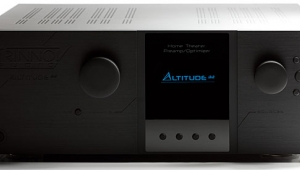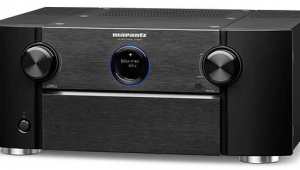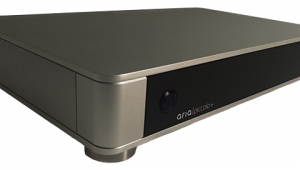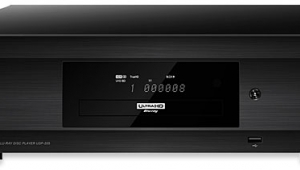| Columns Retired Columns & Blogs |
Music in the Round #19 Recordings in the Round
Sidebar: Recordings in the Round
WIDOR: Mass, Op. 36
Daniel Roth, Mark Dwyer, Stephen Tharp, organ; Choeur Darius Milhaud, Camille Haedt-Goussu, dir.; Ensemble Dodecamen, Christopher Hyde, dir.
JAV Recordings JAV158 (SACD)
JAV Recordings is Joe Vitacco, and it is apparent from all aspects of this production, as well as from the liner notes, that it is a labor of love. Recorded at Paris's St. Sulpice, where Widor was "temporary" organist for 64 years (!), it is a re-creation of a work Widor wrote specifically for the double chorus and two organs available to him there. One needs no prior knowledge of the work to appreciate Widor's rich and colorful harmonics, especially when they are presented so vividly. The strongly ambient soundfields are highly but appropriately directional (two organs, two choirs), and the dynamic range is huge, with some of the most powerful organ fundamentals I've heard on SACD. Available only from www.pipeorgancds.com.
CHOPIN: Piano Music
Études, Op.10; Barcarolle, Op.60; Sonata 2
Nelson Friere, piano
Decca 475 6617 (SACD)
MOZART: Piano Music
Sonatas K.310, K.331, K.576; Suite, K.399; Gigue, K.574; Rondo, K.511
Charles Rosen, piano
Fonè 025 (SACD)
These hugely successful piano recordings differ greatly. I've not been a fan of Decca's SACDs, which often have a big, bland, blocky sound, but in this studio recording of music by Chopin almost all trace of the recording venue's acoustic has vanished, and Nelson Friere's big Steinway is simply right there in the front of my listening room. This suits Friere's sweeping romantic style while retaining delicacy and subtlety. The Mozart disc, on the other hand, is notable for charm and clarity. Charles Rosen is recorded in the Sala Musica of the Villa di Ninfi, about 40 miles southeast of Rome, playing a pearly-sounding 1884 Bechstein given to the estate by Franz Liszt. The pieces are performed in an intimate acoustic that complements Rosen's elegance and intelligence, all in the service of Mozart. Get both of these and you can choose whether to be transported to Rosen in Italy or have Friere come to you.
LADYSMITH BLACK MAMBAZO: Long Walk to Freedom
Telarc/Heads Up HUSA 9109 (SACD)
Even better than their first SACD in terms of program material, performance, and sound, Ladysmith Black Mambazo's Long Walk to Freedom is very surround-y, voices coming at you from all sides. It also includes re-recordings of some of the songs that originally appeared on Paul Simon's Graceland, which first exposed Ladysmith to a wide US audience. Joined by guests including Sarah McLachlan, Natalie Merchant, Emmylou Harris, Taj Mahal, and Hugh Masakela, Ladysmith jams even more intensely than before, and the listener is brought inside to become a part of the joyous occasion. This recording's big, rich sound has worked impressively well on every system I've tried.
GERSHWIN: Rhapsody in Blue, Concerto in F, Prelude 2
Michel Camilo, piano; Ernest Martinez Izquierdo, Orquesta Sinfónica de Barcelona
Telarc SACD-63611 (SACD)
I am not a big Gershwin fan, but this is the most I've enjoyed these pieces in decades. The orchestral opening of Rhapsody in Blue was unremarkable, but at the piano's entry, I said, "Wait, that's not how it goes!" But as I listened to Michel Camilo, I heard an extremely fresh and innovative performance that transformed the familiar into the fascinating. I've played this disc over and over, each time gaining new perspectives on all three works through Camilo's approach, which is more that of a jazz than a concert artist. Telarc's technically secure, typically immediate and powerful sound shows off the Barcelona orchestra pretty well, too.
TCHAIKOVSKY: Symphony 6, "Pathétique"; Serenade for Strings
Danielle Gatti, Royal Philharmonic Orchestra
Harmonia Mundi HMU 807394 (SACD)
This recording, Stereophile's "Recording of the Month" for May, is now commended to you in multichannel as well. Danielle Gatti's traversal of the late Tchaikovsky symphonies has gotten better with each succeeding issue; he presents a strong, flexible, classical view much in the mode of Monteux in his Boston Symphony cycle. Multichannel doesn't transform the excellent two-channel depiction so much as it opens and expands it with a very concert-like presentation—say, from Row M.
WEINGARTNER: Symphony 2, Das Gefilde der Seligen
Marko Letonja, Basel Symphony Orchestra
CPO 777 099-2 (SACD)
Remembered today as one of the conducting giants of the early 20th century, in his day Felix Weingartner was also a well-known composer. These two works from the end of the 19th century sound, to me, much as I'd imagine late Wagner might have sounded had he returned to the symphony. There's a powerful intensity and richness of orchestration that is exciting and sweeping. The sound of the Basel Symphony is huge—CPO gives us almost a podium perspective, with near-surgical detail and instruments spreading in an arc of more than 180 from the front center.
 JACKSON BROWNE: Running on Empty
JACKSON BROWNE: Running on Empty
Elektra/Rhino R2 78283 (DVD-A/CD)
Browne's classic album, based on his 1977 tour, has been remastered, and the multichannel DVD-Audio disc lets us hear the songs in the real context of their performance. From these performances—onstage and backstage, in hotel rooms and on the tour bus—the listener feels a part of the creative event. Not to be missed.
 J.S. BACH: The Four Orchestral Suites
J.S. BACH: The Four Orchestral Suites
Masaaki Suzuki, Bach Collegium Japan
BIS SACD-1431 (2 SACDs)
This is one of the most incredibly satisfying SACD releases (two discs for the price of one) that I've heard. Performed on Baroque instruments in period style, but with uncommon warmth and humanity, this set so gripped my attention that I listened to it twice through at first hearing. Virtuosity abounds, but what engages is the flow of musical ideas. It's all matched by BIS's sound, which is precise but rich, and engaging, with remarkable depth and detail.
BARTÓK: Concerto for Orchestra, Dance Suite, Hungarian Peasant Songs
Zoltán Kocsis, Hungarian National Philharmonic Orchestra
Hungaroton Classics HSACD 32187
These are great and stylish performances of Bartók's most famous work for orchestra, along with two of his more Hungarian-flavored sets. The other two performances of the Concerto for Orchestra on SACD, by Paavo Järvi (Telarc) and Christoph Eschenbach (Ondine), are fine in their own rights, but here Zoltán Kocsis invests each movement with a distinctive flair while maintaining the integrity of the entire work. The multichannel sound is direct and clean, with a decently wide spread, excellent instrumental details, and tight, tuneful bass. A keeper.—Kalman Rubinson
- Log in or register to post comments




































